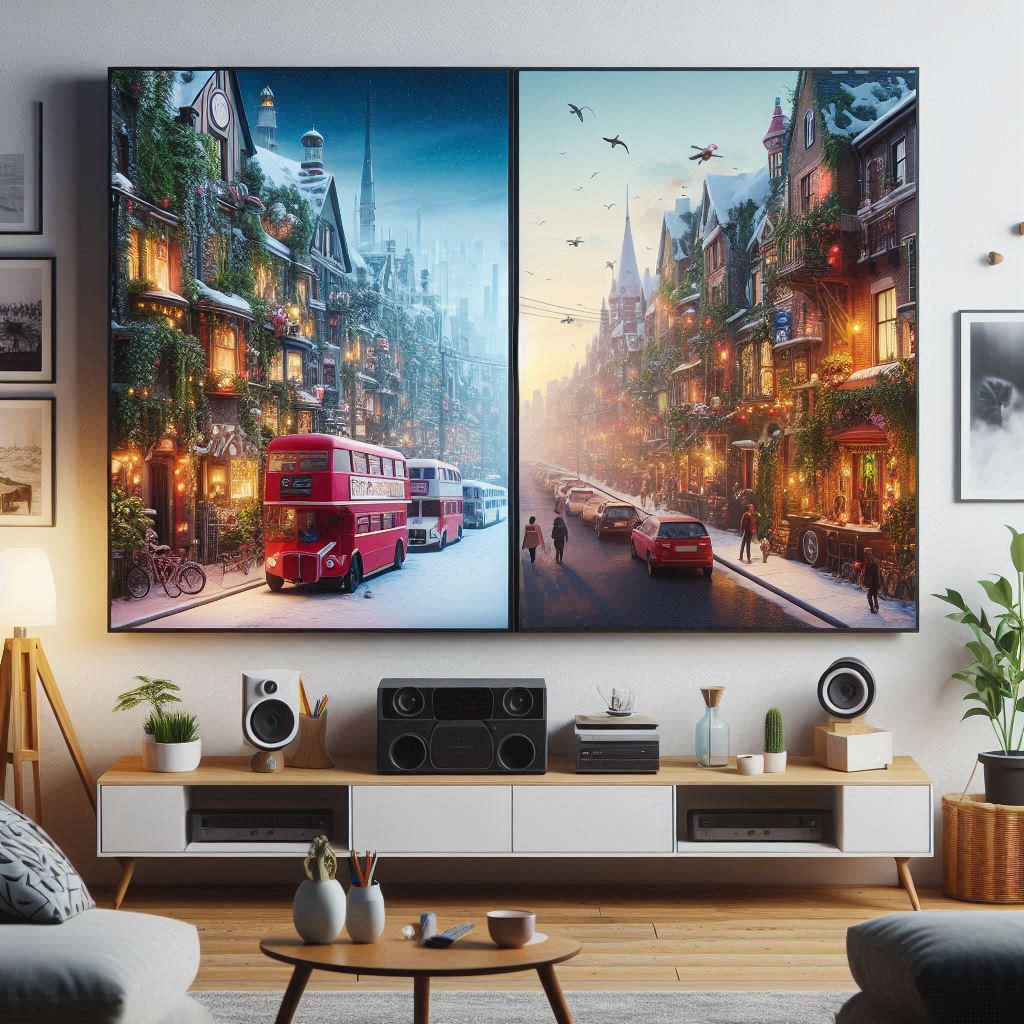In this blog post, we'll compare wall-mounted and stand-mounted TVs to help you decide which setup is best for you.
Choosing between a wall-mounted and a stand-mounted TV can be a tough decision. Both options have their own advantages and drawbacks, and the right choice depends on your space, aesthetic preferences, and functional needs.
Wall-Mounted TVs

Wall-mounted TVs are becoming increasingly popular, especially in modern homes and offices. By securing the TV to the wall with a mounting bracket, you can achieve a sleek and clean look. Here are some key benefits of wall-mounting your TV:
Advantages of Wall-Mounted TVs:
-
Space-Saving Design
Wall-mounted TVs eliminate the need for bulky furniture, freeing up floor space and making rooms feel more spacious. -
Aesthetic Appeal
A wall-mounted TV creates a minimalist and sophisticated look, perfect for contemporary interiors. -
Improved Viewing Experience
Mounting your TV at eye level enhances comfort and reduces neck strain, making for a better viewing experience. -
Increased Safety
With the TV securely mounted on the wall, there's a lower risk of it being accidentally knocked over—ideal for households with kids and pets.
Disadvantages of Wall-Mounted TVs:
-
Difficult Installation
Installing a TV mount requires drilling and tools, making it more complex compared to simply placing it on a stand. -
Limited Flexibility
Once mounted, adjusting the position of the TV requires additional effort, especially if you want to move it to another location. -
Cable Management Challenges
Concealing cables for a clean look may require additional effort, such as using cable covers or in-wall cable routing.
Stand-Mounted TVs
Stand-mounted TVs, also known as tabletop TVs, are placed on entertainment units, shelves, or TV stands. This traditional setup is still preferred by many due to its convenience and ease of installation.
Advantages of Stand-Mounted TVs:
-
Easy Installation
No drilling or mounting required—simply place the TV on a sturdy stand, and you’re good to go. -
Flexibility and Mobility
A stand-mounted TV can be moved easily if you need to rearrange your room or relocate the TV. -
More Storage Options
TV stands often come with shelves or drawers, providing additional storage for media players, gaming consoles, and other accessories. -
Better Accessibility
If you frequently connect or disconnect devices, a stand-mounted TV allows easier access to ports and cables.
Disadvantages of Stand-Mounted TVs:
-
Takes Up More Space
TV stands require floor space, making them less suitable for small rooms. -
Less Secure
A TV on a stand is more prone to accidental tipping, which can be a safety hazard in homes with young children or pets. -
Potential Clutter
Cables, devices, and accessories can accumulate on the stand, creating a cluttered look.
Which One Should You Choose?
The decision between a wall-mounted and stand-mounted TV depends on your specific needs:
-
If you prioritize aesthetics, save space, and prefer a sleek setup, a wall-mounted TV is the best option.
-
If you want flexibility, easy installation, and additional storage, a stand-mounted TV is the way to go.
Ultimately, both setups have their pros and cons, so consider your space, style, and lifestyle before making a choice. Whether mounted on the wall or placed on a stand, your TV setup should enhance your viewing experience while fitting seamlessly into your home.


